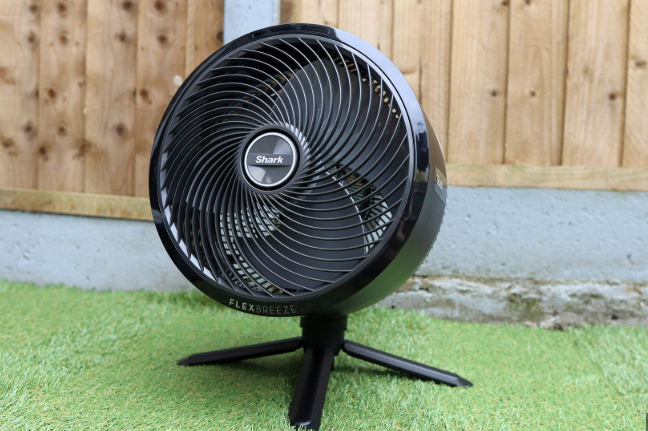When summer heat hits, a reliable electric fan can be a game-changer for keeping your space cool and comfortable. This electric fan review provides a comprehensive guide to selecting, setting up, and maintaining the perfect fan for your needs. From understanding electric fan setup to mastering electric fan troubleshooting, we’ll cover all the essentials to help you stay cool efficiently. Whether you’re eyeing a portable electric fan or a robust tower model, this guide offers practical tips to make an informed decision.
Why an Electric Fan Is a Smart Choice
Electric fans are an affordable, energy-efficient alternative to air conditioners, offering a refreshing breeze without spiking your electricity bill. They’re versatile, easy to use, and available in various styles to suit different spaces. This electric fan review explores the benefits of fans, including their low power consumption—often costing just a few cents per hour—and their ability to circulate air effectively in any room. From compact desk fans to powerful pedestal models, there’s an option for every home or office.
Types of Electric Fans
Before diving deeper into this electric fan review, let’s look at the main types of electric fans available:
- Desk Fans: Small and portable, ideal for personal use on desks or nightstands. Perfect as a portable electric fan for tight spaces.
- Tower Fans: Sleek and space-saving, these are great for larger rooms with features like oscillation and remote control.
- Pedestal Fans: Adjustable in height, they deliver strong airflow for living rooms or bedrooms.
- Floor Fans: Built for high-velocity air circulation, suitable for large areas like garages or patios.
- Bladeless Fans: Modern and safe, these fans are stylish and often include air-purifying features, ideal for families.
Each type caters to specific needs, so consider your space and cooling requirements when choosing the best electric fan.
Electric Fan Setup: Quick and Easy Steps
Proper electric fan setup ensures your fan performs at its best. Here’s a simple guide to get started:
- Unpack and Check Components: Verify that all parts, such as the base, blades, and remote (if included), are present and undamaged.
- Assemble Securely: For pedestal or tower fans, attach the base firmly, using screws if required, as per the manual.
- Choose the Right Spot: Place the fan on a stable, flat surface, away from curtains or edges to prevent tipping. Position it opposite a wall for better air distribution.
- Plug In and Test: Connect to a power source and test all settings, including speed and oscillation, to ensure everything works.
Strategic placement, like angling the fan at 90 degrees in smaller rooms, can optimize airflow. For safety, keep it out of reach of children or pets.

How to Use an Electric Fan for Maximum Cooling
Learning how to use an electric fan effectively can enhance comfort and efficiency. Here are some electric fan tips to maximize performance:
- Leverage Oscillation: Use the oscillation feature to spread air evenly, reducing the need for high-speed settings and saving energy.
- Optimize Placement: Place the fan near a window to draw in cooler air or in front of a bowl of ice for a chilled breeze.
- Utilize Timers: Set timers for nighttime use to save energy while staying cool as you sleep.
- Pair with AC: Combine your fan with an air conditioner to circulate cool air, allowing you to raise the AC temperature and cut energy costs.
These strategies help you stay comfortable while keeping energy use low.
Electric Fan Maintenance: Ensuring Longevity
Regular electric fan maintenance keeps your fan running smoothly and extends its lifespan. Here’s how to maintain it:
- Clean Frequently: Dust on blades and grilles can reduce efficiency. See our electric fan cleaning tips below.
- Inspect for Damage: Check the cord and plug for wear or fraying. Stop using the fan if you notice any issues.
- Lubricate When Needed: Some fans require motor or oscillation mechanism lubrication—refer to the manual for guidance.
- Store Properly: When not in use, store the fan in a dry, dust-free area to protect it.
Consistent maintenance ensures your fan operates efficiently and safely over time.
How to Clean an Electric Fan
Electric fan cleaning is vital for performance and air quality. Follow these steps for how to clean an electric fan:
- Disconnect Power: Unplug the fan to ensure electric fan safety during cleaning.
- Remove the Grille: Detach the grille as instructed in the manual, usually by unscrewing or unclipping it.
- Clean Blades: Wipe blades with a dry cloth or use a vacuum to remove dust. For tough grime, use a damp cloth with mild soap, avoiding electrical parts.
- Wash the Grille: Soak the grille in warm, soapy water, scrub gently, and dry completely before reassembling.
- Reassemble and Test: Put the fan back together and test it to confirm it works properly.
Cleaning every few weeks during heavy use prevents dust buildup and maintains air quality.
Electric Fan Troubleshooting: Solving Common Problems
Even the best electric fan may face issues. Here’s a guide to electric fan troubleshooting:
- Fan Won’t Start: Ensure the cord and plug are intact and the outlet works by testing it with another device.
- Low Airflow: Dust on blades or grilles can weaken airflow. Clean thoroughly to restore performance.
- Unusual Noises: Rattling or grinding may indicate loose screws or debris. Tighten parts or remove obstructions.
- Non-Oscillating Fan: The oscillation mechanism may need lubrication or repair. Check the manual for guidance.
If issues persist, contact the manufacturer or a technician to avoid further damage.
Electric Fan Safety: Staying Safe While Staying Cool
Electric fan safety is critical to prevent accidents. Follow these precautions:
- Avoid Water Exposure: Keep fans away from water or damp areas to prevent electrical hazards.
- Protect Kids and Pets: Opt for bladeless fans or models with tight grilles to avoid injuries.
- Limit Overnight Use: Unless equipped with a timer, avoid running the fan all night to reduce overheating risks.
- Inspect Regularly: Check for worn cords or loose parts before use.
These steps ensure safe and worry-free operation.

Key Features to Consider in an Electric Fan
When choosing a fan, certain features can elevate your experience. This electric fan review highlights what to look for:
- Adjustable Speeds: At least three speed settings allow for tailored airflow.
- Oscillation: Expands air coverage, making it ideal for larger spaces.
- Remote Control: Offers convenience for adjusting settings from a distance.
- Timer Function: Saves energy by shutting off automatically, perfect for nighttime use.
- Energy Efficiency: Fans with DC motors consume less power than AC motor models.
Some advanced models include smart features like app control or voice assistant compatibility for added ease.
Best Electric Fan Guide: Top Recommendations for 2025
In this best electric fan guide, we highlight top-performing models based on performance, features, and value:
- Vornado 660 Large Air Circulator: A powerful fan with four speed settings, ideal for large rooms. Its quiet operation makes it great for bedrooms.
- Dreo Nomad One Tower Fan: Sleek and quiet, this tower fan offers eight speeds and a remote, perfect for small to medium spaces.
- Shark FlexBreeze Pro Mist: A versatile pedestal fan that converts to tabletop use, with a misting feature for outdoor cooling and five speed settings.
These fans stand out for their reliability, ease of use, and innovative features, making them top picks in our electric fan review.
Conclusion: Stay Cool with the Perfect Electric Fan
This electric fan review has walked you through everything you need to know to choose, set up, and maintain the ideal fan. From selecting a portable electric fan for small spaces to mastering electric fan cleaning and electric fan troubleshooting, these tips ensure you get the most out of your fan. By prioritizing electric fan safety and regular electric fan maintenance, you can enjoy cool, refreshing air all summer long. Choose a fan that fits your needs, follow our electric fan tips, and stay comfortable without breaking the bank.